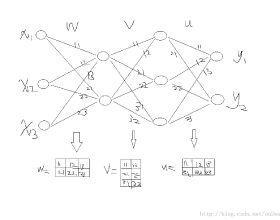Traditional algorithms of point set registration minimizing point-to-plane distances often achieve a better estimation of rigid transformation than those minimizing point-to-point distances. Nevertheless, recent deep-learning-based methods minimize the point-to-point distances. In contrast to these methods, this paper proposes the first deep-learning-based approach to point-to-plane registration. A challenging part of this problem is that a typical solution for point-to-plane registration requires an iterative process of accumulating small transformations obtained by minimizing a linearized energy function. The iteration significantly increases the size of the computation graph needed for backpropagation and can slow down both forward and backward network evaluations. To solve this problem, we consider the estimated rigid transformation as a function of input point clouds and derive its analytic gradients using the implicit function theorem. The analytic gradient that we introduce is independent of how the error minimizing function (i.e., the rigid transformation) is obtained, thus allowing us to calculate both the rigid transformation and its gradient efficiently. We implement the proposed point-to-plane registration module over several previous methods that minimize point-to-point distances and demonstrate that the extensions outperform the base methods even with point clouds with noise and low-quality point normals estimated with local point distributions.
翻译:点定注册的传统算法尽量减少点到飞机的距离,往往能比那些尽量减少点到点距离的方法更好地估计僵化变异。然而,最近的深学习方法尽量减少点到点距离。与这些方法相反,本文件提出了第一种深学习的点到点登记方法。这个问题的一个具有挑战性的部分是,点到点登记典型的解决方法要求通过最小化能源功能来积累小变异的迭接过程。这种迭代大大增加了反向调整所需的计算图的大小,可以减缓前向和后向网络评价。为了解决这个问题,我们认为估计的硬化变换是输入点云的函数,并利用隐含的电文函数得出其分析性梯度。我们采用的分析性梯度与错误最小化功能(即僵化变)如何获得独立,从而使我们能够以最低线化的能量函数来计算僵化变异及其梯度。我们采用先前的点点点到平面的扩展式登记模块,以最低的云点到点分布质量方法,用普通的距离和估计的距离来显示正常的频率变化。



